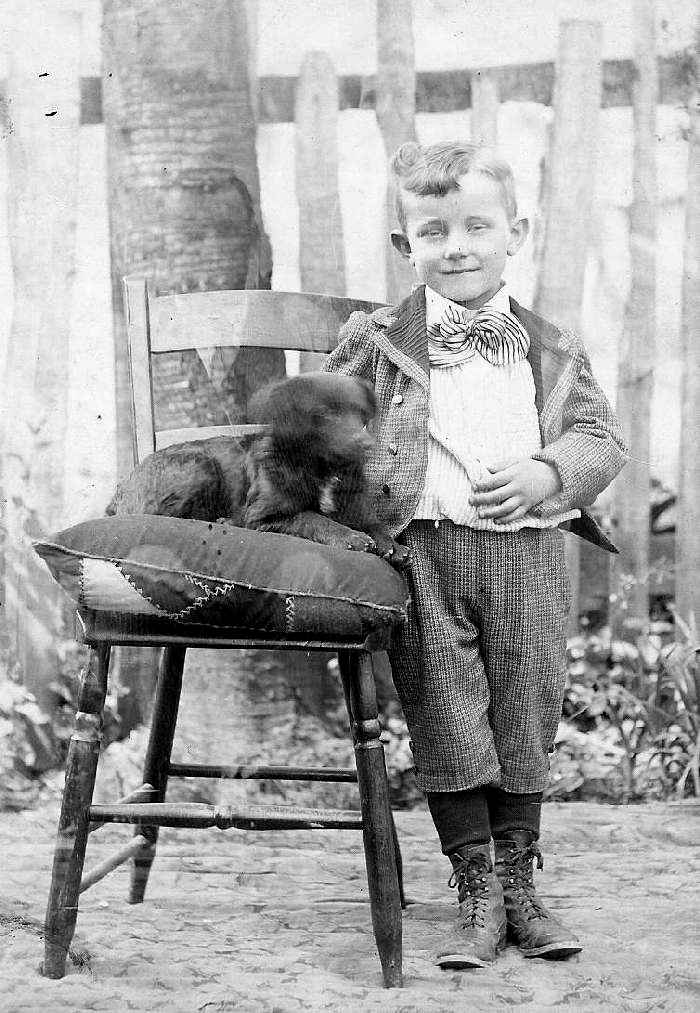
Figure 1.--This unidentified American boy looks to be about 5-years old. His mother has dressed him in a jacket with double breasted styling. He is pictured with his figity puppy. The two would thus grow up together. It looks like his jacket was made to be worn open to show off a fancy Fauntleroy blouse. He has, however, a plain striped blouse. The collar and bow are moderate sizs, at least in contemporary terms. Bows were an important decorative item for boys, but after the tun of the century began to decline in size. Notice the destinctive way the bow is tie, rather like a swirl. At the time, collar bows were more popular for boys than girls. Girls did wear large hair bows. This cabinet card portrait is undated, but the clothes and mount suggest it was taken in the 1900s, probably about 1900-05. It would have been taken by an itinerant photographer. The knee pants look rather long for the 1900s, but this may mean a hand-me-down suit. The two buttons sewn at the leg hem are generally found on knee pants at this time. The jacket cuffs look “turned under” as if the sleeves were too long and the right leg hem is coming out of the seam, which brings to mind that this is not a new suit but a hand-me-down. The background shows a summer garden, making the boy’s heavy ribbed long stockings in laced-up, well-worn ankle boots especially noteworthy. Notice the jacket’s ribbed corduroy inserts in the collar. The suit fabric appears to be a light-weight summer fabric in a rather loud pattern. Notice the head of a man in the tree. We are calling this an example of “spirit” photography so popular late 19th century. Image coutesy of Janet Finley. |

